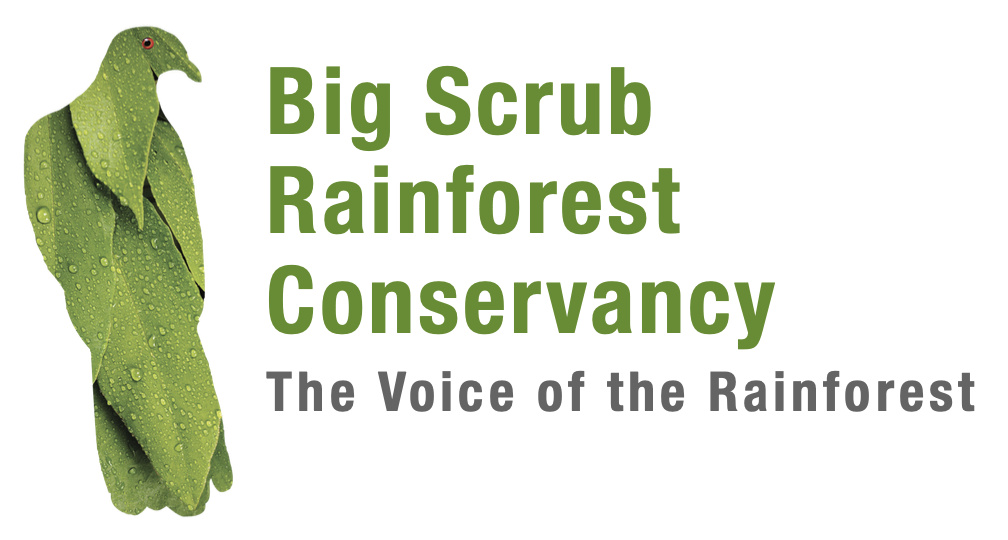Contributed by Ken Dorey, Big Scrub Landcare
Biodiversity is a wonderful thing – who doesn’t like biodiversity? As an ID novice I’ve had moments when diversity, the sheer number of species, has stretched my patience – when pouring over a field guide, frustration can merge into a dark resignation, and I’ve asked myself why do we need so many species and wouldn’t it be convenient if a few of those look-a-like species had the courtesy to take the wide-open extinction door? Well, that degenerated quickly!
For some reason I’ve never held this malign resentment against vines. Yes, vines do offend my work ethic principles by piggy-backing on the efforts of species that actually make the effort to grow a trunk and support themselves in the cut-throat world of sunlight harvesting but, on the other hand, they add dark thickets for the forest fauna and amusing swirly bits for the humans – vines aren’t all bad.
In fact, my favorite stories to Big Scrub newcomers are about vines! Who isn’t fascinated by Pothos’ leaf-on-the-end-of-a-leaf, the furry blackbean-like seeds of Native Wistaria or the whip-like leaf ending of the Whip Vine; my father used Whip Vine stems as a child in the 1930s to make both bows and arrows. How clever is the Wait-a-While Vine whose grappling hook tendrils can shred clothes and skin if you don’t ‘wait-a-while’ and carefully retreat; settlers used the long-handled brush hook to avoid the grapples and generally clear vines and small trees to make room for axe swings.
To our northern hemisphere visitors I point out that all our vines spiral up the trees in the same direction (clockwise as you look up) and ask if their vines go in the opposite direction. That would be amazing – if it where true. Evidently it has more to do with the sun’s movement then the coriolis effect.
Tendril, grappling hooks and whips are all great but sometimes you may need to look a little harder for the name of your specimen vine. In the field guide, Trees and Shrubs in Rainforests of NSW and Southern Qld, (Williams, Harden and McDonald), the authors identify 541 species of trees and shrubs but in their dramatically slimmer book, Rainforest Climbing Plants, the authors identify just 140 species of vines. There are less vine species but even more importantly for identification is that these species are found in very diverse genera and families. They are dramatically different in leaf shape and arrangement, often with cool tendrils – even Blind Freddy could recognize species from the line drawings! Well, mostly, line drawing aren’t exactly ‘life-like’. Rainforest Climbing Plants can be bought here for ($35).
If you prefer to search through a collection of vine pictures to find your specimen then a good place is Flickr The Flickr site may not be comprehensive but most of the vines are there and the pictures are very life-like.
If you’re still having trouble then the Facebook group Australian Indigenoud Plant Identification might be able to help. A couple of pictures, showing things like leave structure, flowers and fruit, will be needed plus location.


